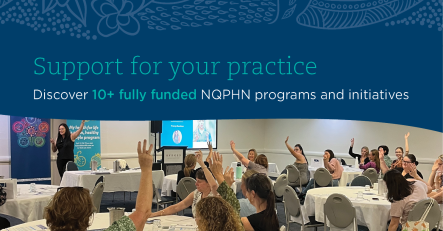How can we help you today?
The Queensland Government has developed resources to support operators of residential aged care homes (RACHs) to develop, review or update their business continuity and disaster or emergency management plans:
- Residential Aged Care Planning Resource (PDF, 1.43MB)
- RACH Planning and Response Checklist (PDF, 387KB)
Good planning assists in keeping residents, staff, and visitors safe in disaster or emergency events.
Call 000 or the local emergency services as soon as you know about an emergency.
Each state has its own police, fire and ambulance services. Call 000 early to receive help as soon as possible.
Refer to your Emergency Risk Management Plan which should include plans for dealing with an emergency evacuation. This includes transport and care for those receiving your services. This is important if emergency services are not available or become delayed in an emergency. For example, ambulances may not be available to transport large numbers of residents in the middle of a bushfire or other disaster.
As a provider, you must maintain quality care to older people during an emergency. This is required by the Aged Care Quality Standards (Quality Standards) and the Aged Care Act 1997. It might also be required for your grant or aged care funding agreement.
Who is responsible during an emergency?
All aged care services must have an emergency management plan. Your plan will include staff roles before, during and after an emergency.
Volunteers without police checks can help during an emergency if they are fully supervised. This requirement is set out in the Aged Care Worker Screening Guidelines. These guidelines help aged care providers understand NDIS Worker Screening and police check requirements.
Poor or slow responses to an emergency increases risk to older people and staff. The Quality Standards require you to maintain effective risk management systems and practices. These systems ensure you can manage high-impact risks to the care of older people during an emergency. Emergency risk management falls under Standard 3 and Standard 8.
In preparation for and in response to an emergency event, you must:
- Plan for staff shortages. Staff travel to and from work is likely to change because of an emergency event.
- Undertake appropriate assessments and planning. Set up plans for the immediate, medium and long term after an emergency. Explain how you will provide care and services during an emergency. Focus on those at highest risk.
- Plan for power failures and other critical infrastructure issues. This includes road access, internet, phone services, and water and sewerage systems.
- Identify, support and monitor affected people and situations. Be aware how the emergency event continues to affect older people.
- Adapt service delivery to accommodate restricted access to essential supply chains.
Home care service providers should make welfare checks on older people in their care. You can make welfare checks by phone if you cannot visit in person. Issues found during welfare checks might require immediate action. Call 000 for an emergency response.
You must address all issues found during a welfare check. This might mean working with another provider to deliver care or services.
Contacting the Department of Health and Aged Care about an emergency
You should always contact your local emergency services or 000 in an emergency first if there is actual or immediate danger to anyone receiving your services. This includes your staff, volunteers or visitors on site.
The Department cannot provide the following services during an emergency:
- physically preparing your service for an anticipated emergency
- evacuation support such as transport
- recovery support such as clean up or repairs.
After contacting Emergency Services, you must contact a state and territory office if an emergency is likely to affect your ability to provide safe, quality care. This includes evacuations and shelter-in-place orders.
State and territory emergency contacts
The Department has offices in every state and territory. Contact your local office if:
- you need assistance to find accommodation for aged care residents due to an evacuation
- your service cannot meet its obligations under its grant or aged care funding agreement.
You can call the Queensland number below 24 hours a day, seven days a week:
For queries about aged care services not related to emergencies, contact My Aged Care on 1800 200 422.
High-risk weather season runs from October to April every year. This means flooding, bushfire, tropical cyclones, storms and heatwaves are all more likely. High-risk weather poses a serious risk of damage, injury and loss of life.
During the high-risk weather season, aged care services and aged care homes are more likely to experience:
- evacuations
- staff shortages
- power and system failures
- restricted access to essential supplies.
Preparing an emergency management plan
An emergency management plan ensures safe service delivery continues during an emergency. Providers must have an emergency management plan in place.
Your funding or grant agreement may also require an emergency management plan. Additionally, local government authorities may require you to assess risks and report on threat levels.
The emergency management plan allows you to consider risks to residents and staff, and the steps required to reduce those risks. Planning helps you to assess the impacts of identified risks to staff, family and older people at all stages of an emergency.
Review and update your emergency management plan every year. Safe Work Australia provides advice on how to prepare an emergency management plan, including a template.
The Department develops a checklist of activities to help you prepare:
- Preparing for an Emergency Event – Residential Aged Care
- Preparing for an Emergency Event – Home Care
- Preparing for an Emergency Event – Commonwealth Home Support Program
Local agencies and emergency management groups can also help you to prepare.
Costs during and after an emergency
Providers are responsible for the costs of planning for an emergency. You are also responsible for costs incurred during an emergency including relocation costs. The Australian Government and/or state or territory governments may make emergency funding available following extraordinary events.
The Department will continue to pay providers subsidies if they have to relocate residents to a different aged care home due to an emergency.
Providers will continue to collect the resident's aged care fees during an emergency. If residents are relocated, the relocating provider is responsible for paying back any costs incurred by the aged care home the residents are moving to.
You can use Home Care Package funding to cover transportation and accommodation costs in emergencies if it ensures continuous care.
The Department's temporary relocation of residents in emergency situations fact sheet is for residential aged care providers who must temporarily relocate residents in an emergency. This fact sheet covers how funding works and what providers should do when temporarily relocating residents in an emergency.
Preparing for extreme heat
Extreme heat poses a risk to health. Heat-related illness can cause mild conditions such as a rash or cramps. It can also cause serious conditions such as heat stroke.
You can check for heatwave information with the Heatwave Service for Australia.
View our resources to help you recognise and prepare for the risks during hot weather:
- Caring for older people in warmer weather – Residential aged care
- Caring for older people in warmer weather – Home care and CHSP
Preparing for a flood event
Information on health supports for flood affected areas can be found on the Department of Health and Aged Care's website.






